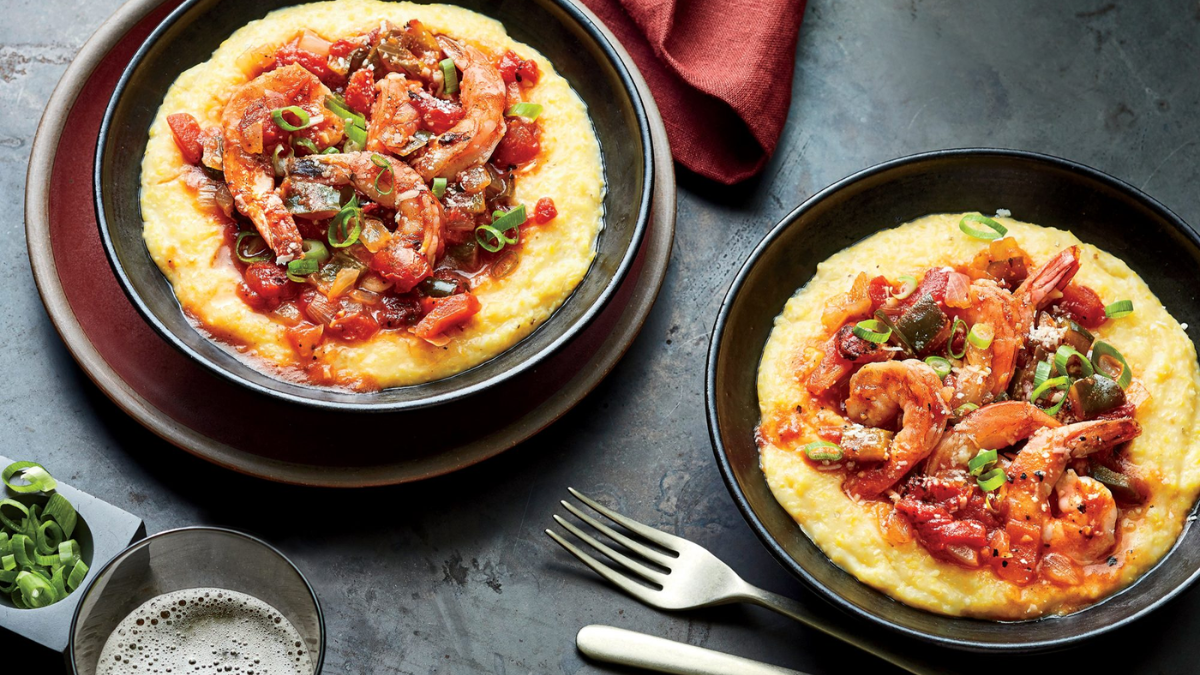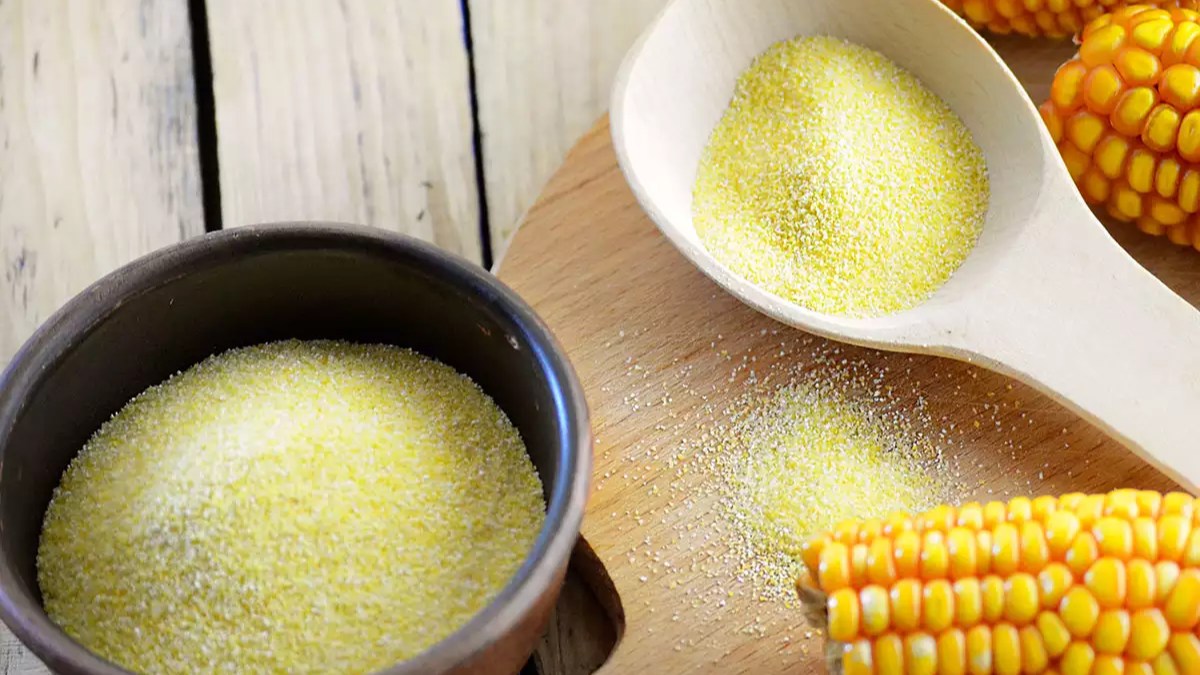Grits are a traditional morning food in the south, yet whether you like salt or sugar is a hotly contested personal choice. Native Americans were the first to eat grits, which have long been a mainstay in the American South. Additionally, heirloom types and their provenance are highlighted on restaurant menus, and grits take center stage in traditional low-country meals like shrimp and grits. It is also a useful and affordable pantry staple that can feed a large group or be served as a side that goes well with just about anything.
It, typically served with copious amounts of butter, can be a wet meal made from boiled cornmeal. The Old English word “great,” which means “coarse meal,” is where the name “grits” originates. They are made by boiling dried, crushed corn (Maize) with milk, water, or broth until the mixture has the consistency of thick, creamy porridge.
Grits Nutrition Facts
| Nutrient | Amount per 100g | % Daily Value |
| Calories | 68 | 3% |
| Total Fat | 0.6g | 1% |
| Saturated Fat | 0.2g | 1% |
| Trans Fat | 0g | 0% |
| Cholesterol | 0mg | 0% |
| Sodium | 335mg | 15% |
| Total Carbohydrate | 14.4g | 5% |
| Dietary Fiber | 1.3g | 5% |
| Total Sugars | 0g | |
| Protein | 1.5g | 3% |
| Vitamin D | 0mcg | 0% |
| Calcium | 3mg | 0% |
| Iron | 0.3mg | 2% |
| Potassium | 18mg | 0% |
| Magnesium | 9mg | 2% |
Note: These values are based on the “grits nutrition facts,” using the standard serving size of 100 grams, and the percent daily values are based on a 2,000-calorie diet. Actual daily values may vary depending on your specific dietary needs.
What are Grits?
Common Southern American food, grits, is made from ground or crushed corn. They are often produced from a corn called dent corn, which has a softer, starchier kernel and is most frequently served as a breakfast or side dish. Usually, boiling water, milk, or broth simmer the crushed maize granules until they have a thick, creamy consistency akin to porridge.
Grits are frequently served in savory foods, including bacon, shrimp, catfish, cheese, butter, sugar, syrups, and other dairy products. It comes in a variety of flavors, including:
- Stone-ground. These are made from whole, dried corn kernels coarsely ground in a mill. This type is harder to find in grocery stores because it has a short shelf life and takes 30–60 minutes to cook on the stove.
- Hominy. They are created from corn kernels that have been steeped in an alkaline solution to soften the stiff pericarp (outer shell or hull).Hominy is made by processing the maize kernels further after the pericarp has been cleaned and removed.
- Quick and regular. These types undergo processing, removing the pericarp and germ (nutrient-rich embryo) so they have a stronger, longer life.
- Instant. This precooked, dehydrated version has had both the pericarp and germ removed. They’re widely available in grocery stores.
The final grits should be mildly flavored, thick, and silky. They shouldn’t have a raw or off flavor. It is frequently prepared with additional salt, butter, and cheese since they taste like whatever you mix them with.
What shouldn’t Eat the Benefits of Grit?
It is very nutrient-dense; consuming them may have several remarkable health advantages.
Pack a Variety of Antioxidants
Antioxidants are chemicals that guard your cells against damage caused by free radicals. Highly reactive chemicals known as free radicals can interact with your cells and harm them, which has been related to several chronic diseases, including heart disease and malignancies.
Strong antioxidants with a high molecular weight, like lutein, zeaxanthin, caffeic acid, 4-OH benzoic acid, and syringic acid, have been related to a number of positive health effects. According to human research, the antioxidants lutein and zeaxanthin, for instance, may guard against degenerative eye diseases like cataracts and shield your skin from UV damage.
Naturally Gluten-Free
A family of proteins known as gluten is present in cereals like wheat, barley, rye, and spelling. Foods containing gluten usually don’t have any negative impact on most don’t. However, adverse symptoms, including bloating, diarrhea, constipation, stomach pain, and exhaustion, may occur in those with celiac disease or non-celiac gluten sensitivity.
Because they are naturally gluten-free, it is a great carbohydrate substitute for anyone who need to avoid this family of proteins. Several facilities that manufacture products containing gluten also process corn. But, if you have celiac disease or a non-celiac gluten sensitivity, read the label carefully for any cautions about gluten contamination.
May Protect Against Degenerative Eye Disorders
Grits include lutein and zeaxanthin, two essential antioxidants for eye health. They are both concentrated in the retina, the part of the eye that converts light into instructions your brain can understand. The risk of degenerative eye illnesses such cataracts and age-related macular degeneration has been associated in multiple human studies to increased intake of lutein and zeaxanthin (AMD).
By inhibiting the generation of melatonin, a hormone that aids in body relaxation and deep sleep, blue-wavelength light helps your body recognize that it is daytime. Additionally, these antioxidants may shield your eyes from potential blue light impairment. However, excessive exposure to blue light can harm the cornea, the top layer of your eye.
It may Help Combat Anemia
When you have anemia, your muscles and tissues don’t get enough oxygen to function properly don’t Shortness of breath, pale skin, and weariness are symptoms. Anemia is frequently brought on by iron deficiency.
Without iron, your body cannot produce enough hemoglobin, a protein that aids red blood cells in carrying oxygen. A diet high in grits may help prevent iron deficiency anemia.
They are a fantastic source of plant-based iron, supplying around 8% of the RDI in one cup (257 grams). Because folate aids in producing red blood cells, a folate deficit can also result in anemia. It contains a lot of folates, providing 25% of the RDI in one cup (257 grams)
Disadvantages of Grits
It has several drawbacks despite its tremendous potential advantages:
- First off, a process that removes the maize kernel’s germ and pericarp is used to generate the generally available varieties, such as quick, regular, or immediate (embryo). The endosperm, which is a starchy component, is all that is left.
- Quick, ordinary, or instant types don’t include all the nutrients. You might don’t participate in the stone-ground variants manufactured from entire corn kernels since the pericarp and germ are laden with nutrients.
- For instance, processed grits, manufactured from maize with the pericarp removed, have less fiber than whole corn kernels. A significant source of fiber is the pericarp.
- The health advantages of fiber, an indigestible carbohydrate, include better digestion, lower blood cholesterol, enhanced sensations of fullness, and weight loss.
- Although stone-ground varieties are a healthier option, obtaining them in grocery shops can be challenging, especially if you don’t live in the Southern United States. Don’t Another drawback is that gs’ usual preparation with or serving of Grits’igh-calorie components includes milk, butter, cheese, syrups, bacon, and fried catfish. Overconsumption of calorie-dense foods might eventually result in weight gain and obesity-related health problems like heart disease.
Which are the Best Grits Recipes?
For dishes like shrimp and grits or cheddar grits, grits are a need. However, they are also flexible starch with a flat surface that readily accepts various flavors. They can be eaten for breakfast, like porridge or bacon and eggs. For lunch, add beans or leftover roasted veggies, or serve them as a side dish or main meal for the night.
Recipes call for different grits depending on the desired texture, flavor, and cooking time. Coarse or medium stone-ground grits cook longer and are perfect for shrimp and cheese grits (around 30 to 45 minutes). Waffles and grit cakes are other foods that can be prepared with grits.
For dinner, when you want the grits to stand out, use stone ground grits, especially heirloom varieties. It is quick to prepare and takes only 5 to 10 minutes, making them a go-to for weekday meals like this recipe for Smothered Pork Chops with Grits. Instant grits baked with shrimp and cheese and topped with butter and cheese may feed a big gathering cheaply.
Here are some of the best grits recipes:
- The Best Shrimp and Grits: Old-fashioned grits are cooked in water, milk, salt, and sugar until they are creamy and tender. Melted butter is then mixed in to add a hint of richness. They are the perfect foundation for exquisite shrimp and fiery andouille, all covered in a glossy, brick-red sauce.
- Lemon Garlic Shrimp and Grits: A lighter version of shrimp and grits can be made in 30 minutes with this crowd-pleaser recipe. A straightforward lemon-and-parsley pan sauce with a burst of brightness is added to the instant grits before being topped with tender shrimp. The grits are then seasoned with Parmesan and a small amount of butter.
- Cheese Grits: They should always be kept in the pantry, especially for this cheese grits recipe. Use chicken broth rather than water to make the grits for a deeper flavor. Once you’ve mastered it, you’ll have a dish that everyone will enjoy. You can serve it with bacon, eggs, and biscuits for Sunday breakfast or with a straightforward roast chicken or broiled pork chops in the evening.
Some Additional Factors
- Baked Cheese Grits: This baked cheese grits meal gives the grits extra flavour by cooking them in chicken broth.Grated cheddar and pepper jack give this dish flavor and creamy consistency. After baking, the custardy interior and browned top produce a custardy interior and an additional layer of a cheesy taste.
- Southern Grits and Eggs: Rapidly cooked grits This vegetarian version of grits and eggs will be the star of the breakfast table. Cheddar cheese is swirled into the cooked grits before being topped with sunny-side-up eggs, sautéed okra, and peppers. We adore the cheesy grits and runny yolk combined to form a sauce for the vegetables. A breakfast that is quite comforting.
- Grits-and-Cheese Souffles: This nearly foolproof soufflé recipe boosts the corn flavor with grits and frozen corn kernels. Cooked, then chilled, quick cooking grits are combined with corn, cream cheese, and Parmesan, then baked till golden. For a light dinner, serve with an arugula salad that is lightly prepared.
Conclusion
Grits are a product of dried, crushed corn that is rich in iron and B vitamins. Compared to quick, regular, or instant varieties, stone-ground varieties are more nutrient-dense. While being highly nutritious, they are frequently served with high-calorie additives.
Milk, cheeses, syrups, sugar, bacon, and other fried or processed meats may be among them. Reducing calories is easy by substitutIt’shealthy, lower-calorie options like fresh fruit for sugar and syrups or more water and broth for whole milk.


